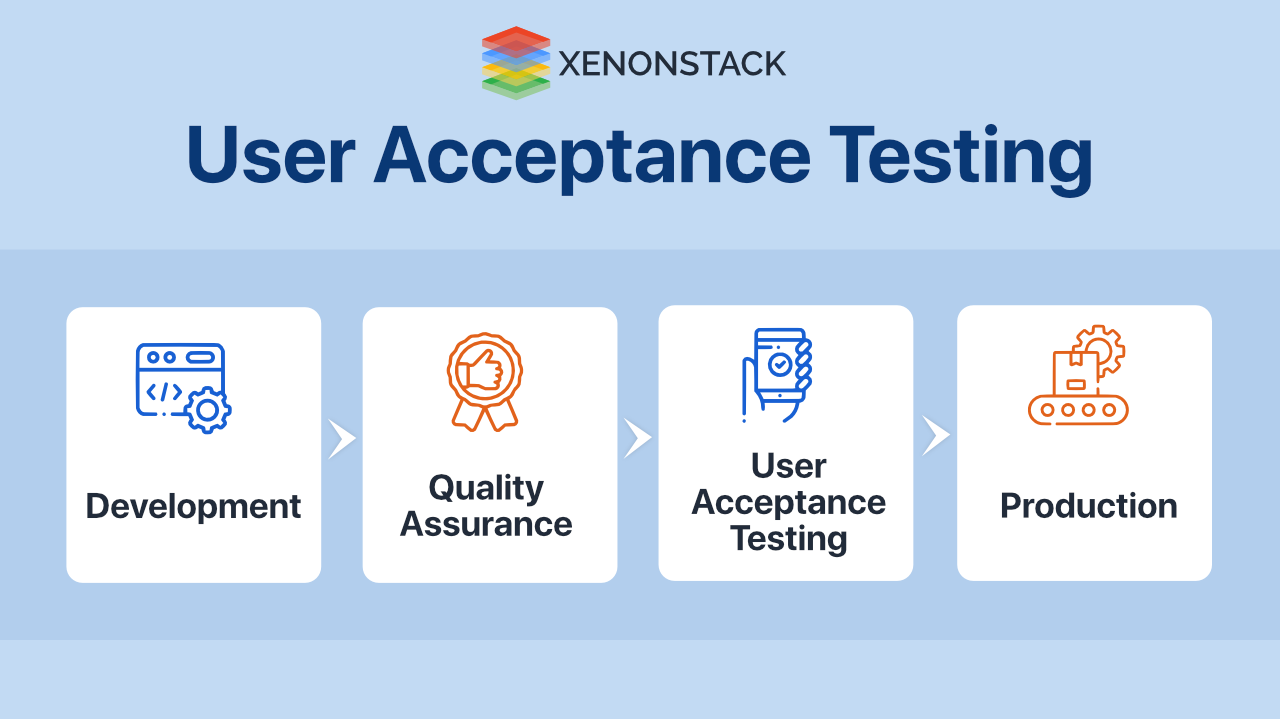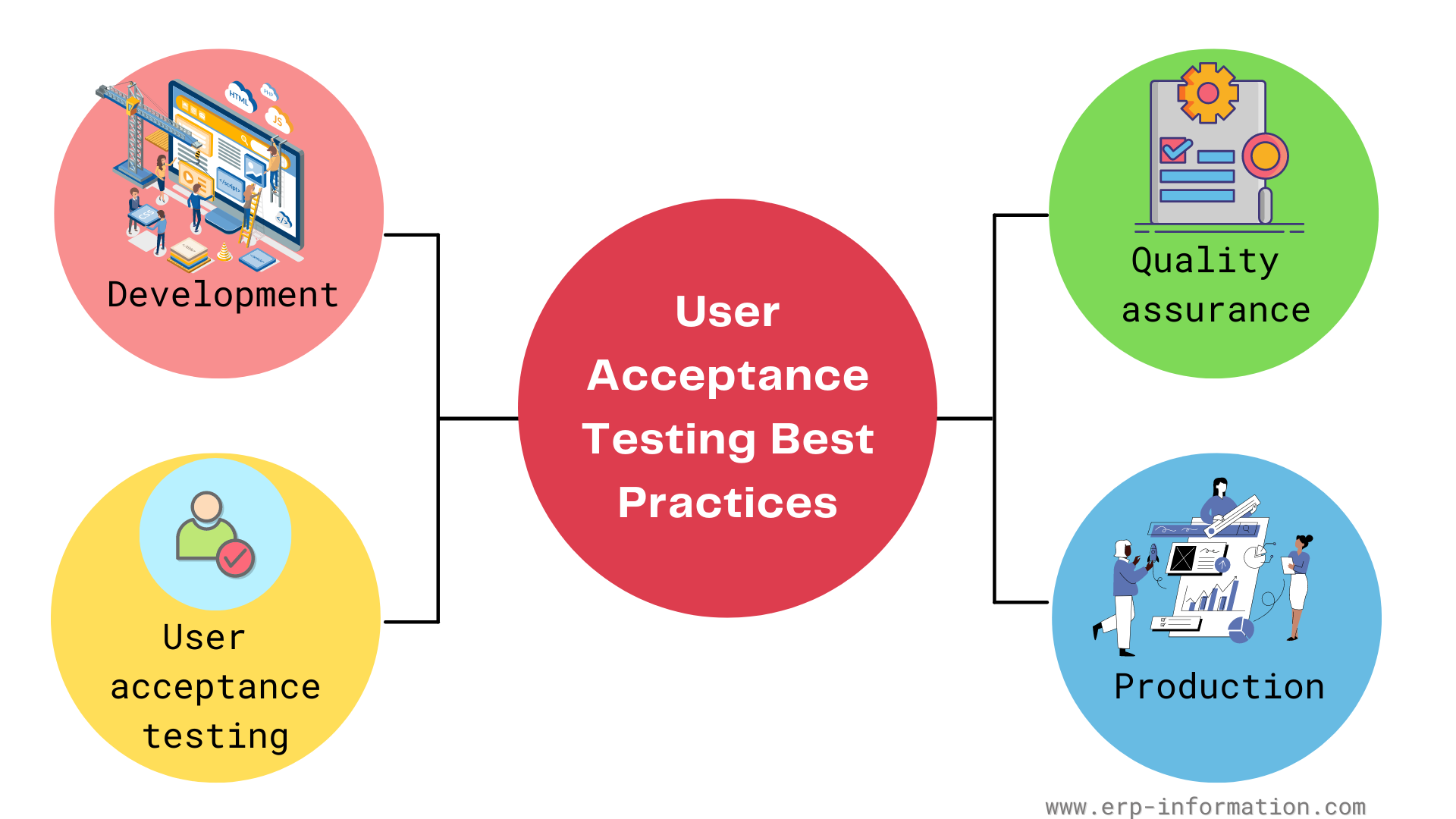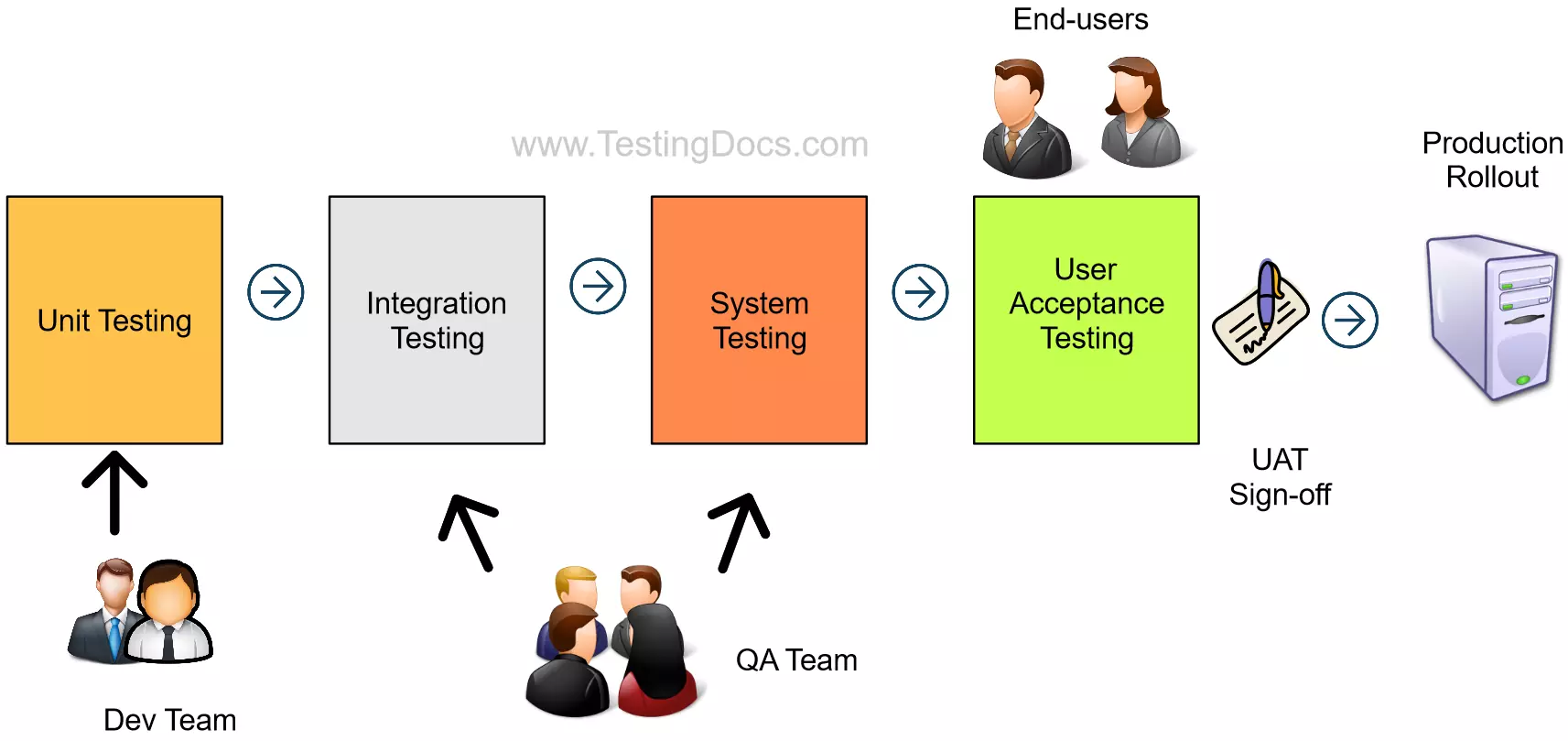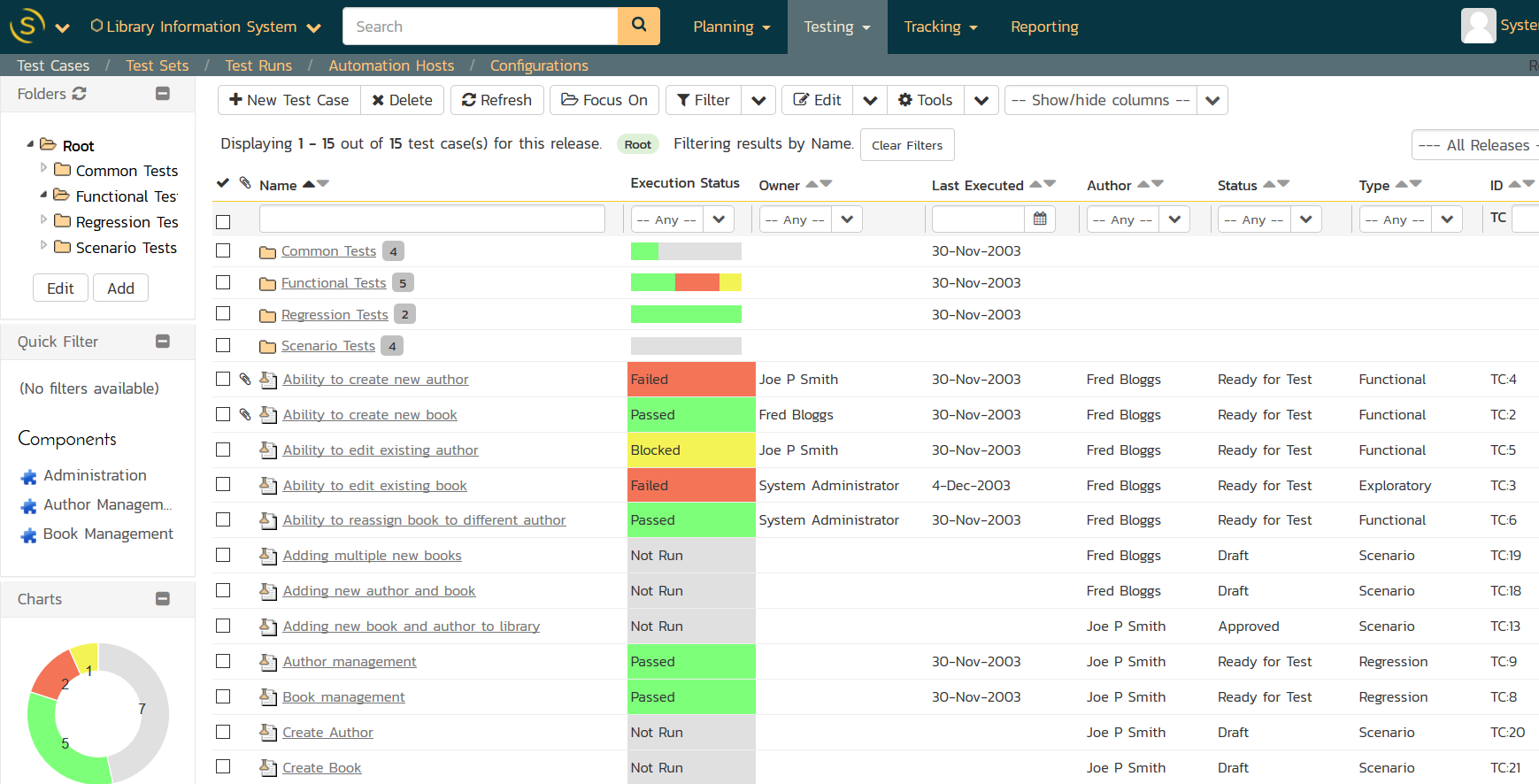User Acceptance Test – UAT – User Acceptance Testing (UAT) plays a pivotal role in the software development lifecycle, serving as the final gatekeeper before a product reaches the hands of end-users. It empowers users to evaluate the software’s functionality, usability, and overall fit for purpose, ensuring that the final product aligns with their expectations and business requirements.
This comprehensive guide delves into the intricacies of UAT, exploring its types, planning and preparation, execution, reporting and analysis, and best practices. By providing a step-by-step roadmap and practical insights, this guide equips readers with the knowledge and tools necessary to conduct effective UAT, ensuring the successful deployment of user-centric software solutions.
Overview of User Acceptance Testing (UAT)
User Acceptance Testing (UAT) is a critical phase in the software development lifecycle that involves testing the software from the end-user’s perspective to ensure that it meets their requirements and expectations.
UAT plays a crucial role in the software development process by providing valuable feedback from the actual users of the software. This feedback helps identify defects, usability issues, and other problems that may not have been detected during earlier testing phases.
Benefits of Conducting UAT
- Ensures that the software meets the end-user’s requirements and expectations.
- Identifies defects and usability issues that may have been missed during earlier testing phases.
- Provides valuable feedback to the development team to improve the software’s quality and functionality.
- Reduces the risk of software failure after deployment.
- Improves customer satisfaction and loyalty.
Types of UAT
- Black-box testing: Tests the software without knowledge of its internal workings.
- White-box testing: Tests the software with knowledge of its internal workings.
- Gray-box testing: A combination of black-box and white-box testing.
Step-by-Step Guide to Conducting UAT
- Identify the stakeholders involved in UAT.
- Define the scope and objectives of UAT.
- Develop a UAT plan.
- Create UAT test cases.
- Set up the UAT environment.
- Conduct UAT testing.
- Record and track defects.
- Communicate test results to stakeholders.
- Prepare a UAT report.
- Analyze UAT results.
- Make recommendations for improvements.
Types of UAT: User Acceptance Test – UAT
There are several types of UAT, each with its advantages and disadvantages. The choice of the right type of UAT for a particular project depends on several factors, including the project’s scope, complexity, and risk.
Some of the most common types of UAT include:
Black-box testing
Black-box testing is a type of UAT in which the testers do not have access to the internal workings of the software. They only know the input and output of the software and test it based on its specifications. Black-box testing is often used to test the functionality of the software and to identify any errors or defects.
Advantages of black-box testing:
- It is a simple and straightforward type of testing that can be performed by testers with limited knowledge of the software.
- It can be used to test the functionality of the software from the user’s perspective.
- It can help to identify errors and defects that may not be found through other types of testing.
Disadvantages of black-box testing:
- It can be time-consuming and expensive to perform.
- It can be difficult to test all of the possible inputs and outputs of the software.
- It can be difficult to identify the root cause of errors and defects.
White-box testing
White-box testing is a type of UAT in which the testers have access to the internal workings of the software. They can see the code and understand how it works. White-box testing is often used to test the structure of the software and to identify any errors or defects in the code.
Advantages of white-box testing:
User Acceptance Test (UAT) is a critical step in software development, ensuring that users are satisfied with the product before it goes live. Similarly, the recent Student Loan Pause provided a crucial UAT period for borrowers, allowing them to test the effectiveness of the program and provide feedback.
The insights gained from this “pause” can inform future UAT processes, ensuring that software products meet the needs of their users.
- It is a more thorough type of testing than black-box testing.
- It can be used to test the structure of the software and to identify any errors or defects in the code.
- It can help to identify the root cause of errors and defects.
Disadvantages of white-box testing:
User Acceptance Test (UAT) is crucial for ensuring that software meets the needs of its end-users. In the context of student loan repayment, UAT can help ensure that borrowers can easily access and manage their loan information. Student Loan Repayment is a complex process, and UAT can help identify and resolve any potential issues that could hinder borrowers’ ability to make payments on time and avoid default.
- It can be complex and time-consuming to perform.
- It requires testers with a deep understanding of the software.
- It can be difficult to test all of the possible paths through the software.
Regression testing
Regression testing is a type of UAT that is performed after changes have been made to the software. It is used to ensure that the changes have not introduced any new errors or defects. Regression testing is often performed using automated testing tools.
Advantages of regression testing:
- It can help to ensure that changes to the software have not introduced any new errors or defects.
- It can be automated, which can save time and money.
- It can be used to test a wide range of scenarios.
Disadvantages of regression testing:
- It can be time-consuming to perform.
- It can be difficult to identify all of the possible scenarios that need to be tested.
- It can be difficult to determine the root cause of errors and defects.
The table below summarizes the key differences between the different types of UAT:
| Type of UAT | Advantages | Disadvantages |
|---|---|---|
| Black-box testing | Simple and straightforward, can be performed by testers with limited knowledge of the software, can help to identify errors and defects that may not be found through other types of testing | Time-consuming and expensive to perform, difficult to test all of the possible inputs and outputs of the software, difficult to identify the root cause of errors and defects |
| White-box testing | More thorough than black-box testing, can be used to test the structure of the software and to identify any errors or defects in the code, can help to identify the root cause of errors and defects | Complex and time-consuming to perform, requires testers with a deep understanding of the software, difficult to test all of the possible paths through the software |
| Regression testing | Can help to ensure that changes to the software have not introduced any new errors or defects, can be automated, which can save time and money, can be used to test a wide range of scenarios | Time-consuming to perform, difficult to identify all of the possible scenarios that need to be tested, difficult to determine the root cause of errors and defects |
The choice of the right type of UAT for a particular project depends on several factors, including the project’s scope, complexity, and risk. In some cases, it may be necessary to use a combination of different types of UAT to achieve the desired level of testing coverage.
Planning and Preparation for UAT
Planning and preparation are critical steps in ensuring a successful UAT. These steps involve defining test objectives, selecting appropriate participants, creating test cases, and establishing a communication plan.
Defining Test Objectives
Clearly defining the objectives of the UAT is essential. These objectives should align with the overall project goals and should focus on the specific aspects of the system that will be tested.
Selecting Appropriate Participants
The participants in the UAT should be carefully selected to ensure that they have the necessary knowledge and expertise to provide valuable feedback. This may include end-users, business analysts, and subject matter experts.
Execution of UAT

The execution phase of UAT involves conducting the actual testing of the software application or system by end-users or business stakeholders.
This phase typically follows a structured approach and includes the following steps:
Test Case Execution
The execution of UAT begins with running the test cases that have been developed during the planning phase. These test cases should be clear and well-defined, covering all the key functionality and requirements of the system.
Recording Test Results
As the test cases are executed, the results are recorded and documented. This includes capturing any errors, defects, or issues encountered during testing. Detailed and accurate recording of test results is crucial for identifying and addressing any potential problems with the system.
Analysis and Reporting of UAT Results

The analysis and reporting of UAT results are crucial for evaluating the effectiveness of the testing process and ensuring that the system meets the intended requirements. This involves examining the collected data, identifying any defects or areas for improvement, and communicating the findings to stakeholders.
The analysis of UAT results typically involves:
- Reviewing test cases and associated results
- Identifying and categorizing defects
- Analyzing trends and patterns in the results
- Assessing the overall effectiveness of the testing process
Importance of Communicating Findings to Stakeholders
Effective communication of UAT results is essential for several reasons:
- Transparency and accountability: Stakeholders need to be informed about the outcome of the testing process and any identified issues.
- Decision-making: The findings help stakeholders make informed decisions about the system’s readiness for production and any necessary corrective actions.
- Continuous improvement: The analysis of UAT results provides valuable insights for improving the testing process and the system itself.
Tools and Techniques for UAT

User Acceptance Testing (UAT) requires a combination of tools and techniques to ensure its effectiveness. These tools and techniques assist in planning, executing, and reporting the results of UAT.
The choice of tools and techniques depends on the specific requirements of the UAT project, the size and complexity of the software being tested, and the resources available.
Test Management Tools
Test management tools provide a centralized platform for managing UAT activities. They help in planning test cases, assigning tasks, tracking progress, and reporting results.
- Advantages:
- Centralized management of UAT activities
- Improved collaboration and communication
- Automated reporting and analysis
- Disadvantages:
- Can be expensive
- May require additional training for users
- May not be suitable for small-scale UAT projects
Test Automation Tools
Test automation tools allow for the automation of repetitive UAT tasks, such as regression testing. They can help reduce the time and effort required for UAT, and improve the accuracy and consistency of testing.
- Advantages:
- Reduced testing time and effort
- Improved accuracy and consistency
- Can be used for regression testing
- Disadvantages:
- Can be expensive
- May require specialized skills to develop and maintain automated tests
- May not be suitable for all types of UAT
Defect Tracking Tools
Defect tracking tools help in tracking and managing defects identified during UAT. They provide a centralized repository for defects, allowing for easy tracking of their status, priority, and resolution.
User Acceptance Test (UAT) plays a critical role in ensuring the quality of software applications. By involving end-users in the testing process, UAT helps identify potential issues and ensure that the application meets their specific requirements. Similarly, in the financial world, staying informed about Student Loan News is crucial for students and borrowers to make informed decisions about their financial future.
By staying up-to-date with the latest news and developments, individuals can optimize their student loan repayment strategies and improve their overall financial well-being. As with UAT, staying informed empowers individuals to take ownership of their financial journey.
- Advantages:
- Centralized management of defects
- Improved collaboration between testers and developers
- Automated notifications and reporting
- Disadvantages:
- Can be expensive
- May require additional training for users
- May not be suitable for small-scale UAT projects
User Experience (UX) Testing Tools
UX testing tools help in evaluating the user experience of the software being tested. They provide insights into how users interact with the software, identify usability issues, and suggest improvements.
User Acceptance Testing (UAT) is a crucial step in software development, ensuring that the product meets the end-users’ needs. Similarly, in the context of student loans, Nelnet Student Loan conducts thorough UAT to guarantee that its loan servicing platform aligns with borrowers’ expectations.
This testing process involves real-world users providing feedback on the platform’s functionality and usability, ultimately contributing to a seamless and satisfactory experience for student loan borrowers.
- Advantages:
- Improved user experience
- Identification of usability issues
- Can be used for both qualitative and quantitative analysis
- Disadvantages:
- Can be time-consuming
- May require specialized skills to conduct UX testing
- May not be suitable for all types of UAT
Best Practices for UAT

Effective User Acceptance Testing (UAT) requires a strategic approach. Here are some best practices to enhance the efficiency and effectiveness of your UAT process:
Involving End-Users, User Acceptance Test – UAT
Involving end-users throughout the UAT process is crucial. They provide valuable insights, feedback, and perspectives based on their actual usage of the system. This helps ensure that the system meets their specific requirements and expectations.
End-users should be actively involved in:
- Defining acceptance criteria
- Creating test cases
- Executing test cases
- Providing feedback and reporting issues
Obtaining Feedback
Obtaining feedback from end-users is essential for successful UAT. This feedback helps identify any usability issues, performance problems, or other areas that need improvement.
Feedback can be collected through various methods, such as:
- User surveys
- Interviews
- Focus groups
- Direct observations
UAT in Agile Development
UAT plays a crucial role in agile development methodologies, ensuring that the software meets the end-users’ needs and requirements. It involves end-users actively participating in the testing process, providing feedback, and validating the software’s functionality.
Challenges and Benefits of UAT in Agile
Conducting UAT in an agile environment presents both challenges and benefits:
Challenges:
– Time constraints: Agile development emphasizes rapid iterations and short development cycles, which can limit the time available for thorough UAT.
– Communication: Ensuring effective communication between developers, testers, and end-users can be challenging, especially in distributed agile teams.
Benefits:
– Early feedback: UAT allows end-users to provide feedback early in the development process, reducing the risk of costly rework later.
– Improved quality: End-user involvement ensures that the software aligns with their actual needs and expectations, leading to improved software quality.
– Increased stakeholder satisfaction: UAT empowers end-users and increases their sense of ownership, resulting in greater stakeholder satisfaction.
Integrating UAT into Agile Frameworks
UAT can be integrated into different agile frameworks in various ways:
Scrum:
– UAT is typically conducted during the Sprint Review, where the team demonstrates the completed work to end-users for feedback.
– End-users can participate in the Sprint Planning meeting to provide input on acceptance criteria and test cases.
Kanban:
– UAT can be incorporated into the Kanban workflow as a separate column.
– End-users can pull items into the UAT column when they are ready to test and provide feedback.
Roles and Responsibilities
Key roles and responsibilities in UAT in an agile context include:
– Product Owner: Responsible for defining acceptance criteria and ensuring end-user involvement.
– Developers: Collaborate with end-users to understand their requirements and implement the software accordingly.
– Testers: Design and execute test cases to verify the software’s functionality and performance.
– End-Users: Actively participate in UAT, providing feedback and validating the software’s usability and effectiveness.
Tools and Techniques
Various tools and techniques can be used for UAT in agile development:
– Test management tools: Help manage test cases, track progress, and report defects.
– Automated testing tools: Automate repetitive tasks, freeing up time for manual testing by end-users.
– Collaboration tools: Facilitate communication and feedback sharing between team members and end-users.
Case Studies
– Example 1: A software development company integrated UAT into its Scrum process. End-users participated in Sprint Reviews, providing valuable feedback that led to significant improvements in the software’s usability.
– Example 2: A healthcare technology company used a Kanban workflow to incorporate UAT. End-users were able to pull items into the UAT column as they became available, resulting in timely feedback and reduced defects.
Common Challenges in UAT

User Acceptance Testing (UAT) is a critical phase in software development that ensures the software meets the user’s requirements. However, UAT can be challenging due to various factors. Identifying and overcoming these challenges is crucial for successful UAT execution.
Challenges and Strategies
Common challenges faced during UAT include:
- Lack of user involvement: Users may not be actively involved in UAT, leading to a lack of understanding of the software’s functionality and user requirements.
- Unclear acceptance criteria: Acceptance criteria may not be well-defined, making it difficult for users to evaluate the software’s performance.
- Time constraints: UAT is often conducted under tight deadlines, which can compromise the thoroughness of testing.
- Lack of resources: Organizations may not have sufficient resources, such as trained testers or a dedicated testing environment, to conduct UAT effectively.
- Communication gaps: Poor communication between users, testers, and developers can hinder effective feedback and issue resolution.
Strategies for overcoming these challenges include:
- Active user involvement: Engage users throughout the UAT process to ensure their needs are met.
- Clear acceptance criteria: Define acceptance criteria in detail, ensuring users have a clear understanding of the expected outcomes.
- Adequate time allocation: Allocate sufficient time for UAT to ensure thorough testing.
- Resource allocation: Secure necessary resources, including trained testers and a dedicated testing environment.
- Effective communication: Establish clear communication channels between users, testers, and developers to facilitate feedback and issue resolution.
| Challenge | Strategy |
|---|---|
| Lack of user involvement | Active user involvement |
| Unclear acceptance criteria | Clear acceptance criteria |
| Time constraints | Adequate time allocation |
| Lack of resources | Resource allocation |
| Communication gaps | Effective communication |
Summary
- Common challenges in UAT include lack of user involvement, unclear acceptance criteria, time constraints, lack of resources, and communication gaps.
- Strategies for overcoming these challenges involve active user engagement, clear acceptance criteria, adequate time allocation, resource allocation, and effective communication.
- Organizations can improve UAT effectiveness by addressing these challenges and implementing appropriate strategies.
Developing and Implementing a UAT Plan
A UAT plan Artikels the scope, objectives, roles and responsibilities, schedule, and resources required for UAT. It serves as a roadmap for the UAT process, ensuring that it is conducted effectively and efficiently.
To develop a UAT plan, the following steps should be taken:
- Define the scope and objectives: Clearly define the scope of the UAT, including the specific features or functionalities to be tested. The objectives should align with the overall business goals of the project.
- Identify roles and responsibilities: Determine the roles and responsibilities of stakeholders involved in UAT, including the UAT team, business users, and technical team.
- Create a test plan: Develop a detailed test plan that Artikels the test cases, test scenarios, and acceptance criteria. The test plan should be based on the requirements and specifications of the system.
- Establish a schedule: Create a realistic schedule for UAT, taking into account the time required for test execution, analysis, and reporting.
- Identify resources: Determine the resources required for UAT, including personnel, equipment, and software.
Closing Summary

In conclusion, User Acceptance Testing (UAT) is an indispensable phase in the software development process, bridging the gap between technical development and user satisfaction. By involving end-users in the evaluation process, UAT ensures that software products meet the needs and expectations of those who will ultimately use them. Embracing the best practices Artikeld in this guide empowers organizations to conduct UAT effectively, resulting in software solutions that are both functional and user-centric.
FAQ Resource
What is the primary purpose of User Acceptance Testing (UAT)?
UAT aims to verify that a software product meets the functional and non-functional requirements defined by end-users, ensuring that it aligns with their expectations and business needs.
What are the key benefits of conducting UAT?
UAT provides valuable insights into the user experience, reduces the risk of deploying software with defects, improves software quality, and enhances user satisfaction.
What are the different types of UAT?
Common types of UAT include black-box testing, white-box testing, regression testing, and exploratory testing, each with its own advantages and disadvantages.
How can organizations ensure effective UAT?
Effective UAT requires careful planning, involving end-users, using clear test cases, tracking defects efficiently, and communicating results clearly to stakeholders.
What are some best practices for UAT in agile development?
In agile development, UAT should be integrated into the development process, involving users in sprint planning and feedback sessions, and leveraging automated testing tools to enhance efficiency.
